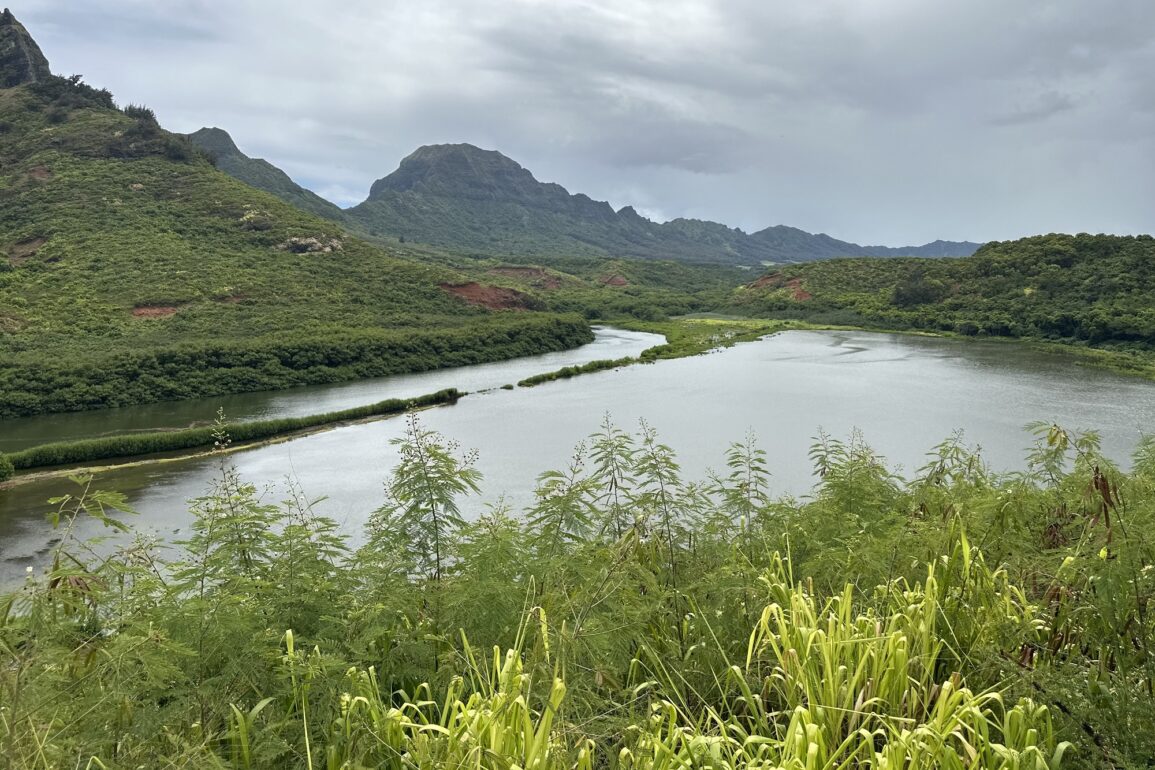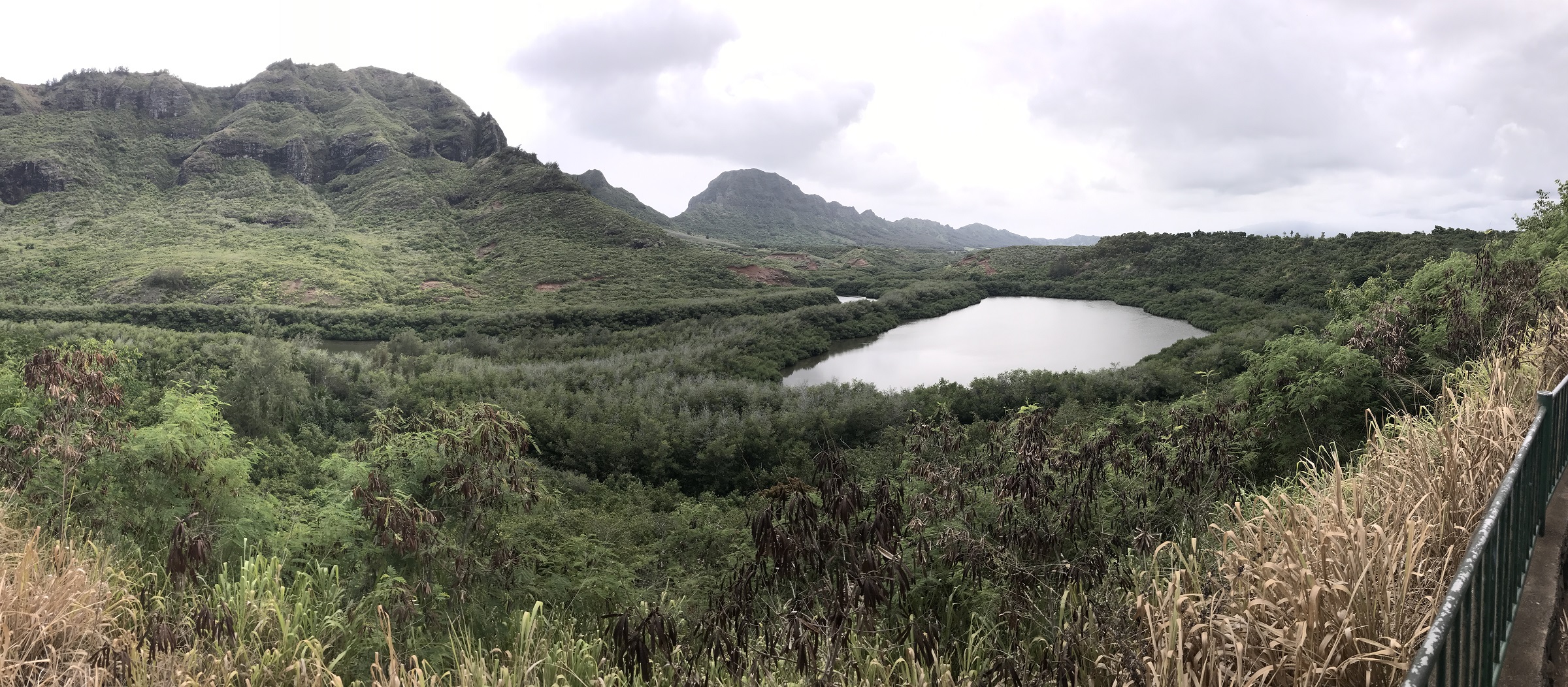Visit the historic Menehune Fishpond, an ancient engineering marvel on Kauai, steeped in legend and cultural significance.
- Ancient fishpond is attributed to the mythical Menehune people.
- A wall was built on a bend of the Huleia River to create the fishpond and trap fish.
- Carbon dating suggests the wall is about 600 years old.
- The fishpond is located near Nawiliwili Harbor in Lihue.
- Visitors can view the fishpond from an overlook on Hulemalu Road.
- Map: Google Maps
The Menehune Fishpond, also known as the Alakoko Fishpond, is a historic and culturally significant site located on the Huleia River on the island of Kauai. This ancient fishpond is renowned for its impressive engineering and its association with Hawaiian mythology, particularly the legend of the Menehune, a mysterious race of small people believed to be master builders that predated the Polynesians who settled Hawaii centuries ago.
History and Construction
The Menehune Fishpond is estimated to be around 500 to 1,000 years old, making it one of the oldest and most remarkable examples of ancient Hawaiian aquaculture. The fishpond spans approximately 27 acres and features an approximate 1,000-foot-long stone wall. This wall, which averages five feet in height, was constructed using basalt rocks transported from various locations. The fishpond is adjacent to the Huleia National Wildlife Refuge, a sanctuary for native birds.
According to Hawaiian legend, the fishpond was built overnight by the Menehune, who worked tirelessly under the cover of darkness to complete the structure before dawn. The story goes that the Menehune formed an unbroken line from the fishpond site to the distant quarry, passing stones hand-to-hand to construct the wall. This tale underscores the incredible skill and coordination attributed to these mythical beings.
While the legend of the Menehune adds a layer of enchantment to the fishpond, some historians and archaeologists suggest that the construction might have involved a highly organized group of skilled workers from the local community rather than mythical beings. Regardless of its origins, the Menehune Fishpond remains a site of wonder and admiration, bridging the gap between history, myth and the natural beauty of Kauai.
Function and Significance
The primary purpose of the Menehune Fishpond was to cultivate fish, an essential food resource for ancient Hawaiians. The pond was ingeniously designed on a bend in the Huleia River to allow fresh water from the river to flow in while trapping fish inside. This sustainable fishing method ensured a steady supply of food for the local community.
In addition to its practical use, the fishpond holds significant cultural and spiritual value. It stands as a testament to the ingenuity and advanced engineering knowledge of ancient Hawaiians. The pond’s construction and the legends surrounding it also play a vital role in the island’s oral history and cultural identity.
Preservation and Recognition
The Menehune Fishpond was designated a National Historic Landmark in 1973, highlighting its importance as a cultural and historical treasure. Efforts to preserve and protect the site have been ongoing, with both government agencies and local organizations working together to maintain its integrity. Recently, volunteers have worked to remove invasive mangrove from the pond.
After the site was put up for sale in early 2021 and threatened by private development, the local community rallied to protect the fishpond. In 2021, it was purchased by the Trust for Public Land, Malama Huleia (a community-based nonprofit), made possible by a $4 million dollar donation from Mark Zuckerberg and his wife Priscilla Chan.
Visitors to the area can view the fishpond from a lookout point on Hulemalu Road, offering a glimpse into the island’s ancient past and the remarkable achievements of its early inhabitants.




